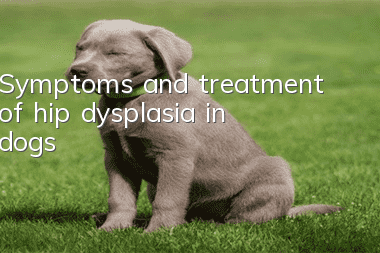Symptoms and treatment of hip dysplasia in dogs

Symptoms of hip dysplasia in dogs:
1. No strength in the hind limbs, intermittent lameness and lameness.
2. The walking posture is strange. He will twist his buttocks greatly when walking and jump on three legs when running.
3. Sometimes the patient will whimper or cry out in pain.
4. Dogs like to lie down and are unwilling to exercise. They will refuse to go down the stairs.
5. The dog has difficulty getting up after lying down.
6. Pain during hip joint examination, and the hip joint is extremely sensitive to palpation.
Treatment methods for dog hip dysplasia:
1. The most important treatment method is surgery. The current surgical treatment methods include: pectineal myotomy, Pubic symphysis resection, pelvic tripartite surgery, femoral head resection arthroplasty, and total hip replacement to name a few. However, surgical treatment is often expensive, and most owners adopt conservative treatment.
2. Conservative treatment refers to maintaining a healthy body shape of the dog, not adding burden to the joints, taking medication to regulate and relieve the pain, and often taking the dog to a spa.
Methods to prevent hip dysplasia:
1. For breeds prone to hip dysplasia, owners can start supplementing joint care products after 3 months of age .
2. Feed your dog high-quality food, which must be rich in nutrients and minerals.
3. When the physical form is not yet developed and finalized, the dog should be given appropriate exercise, but remember not to exercise vigorously. You can take it for jogging, walking, swimming and other less burdensome exercises to promote muscle and bone development. coordinated growth.
4. Regular physical examinations. Once something is wrong, take control and take medicine in time. Generally, it can be controlled in time and will not develop into a serious condition.
- How to bathe a dog in winter
- Taking stock of the most difficult dogs to walk
- How long can a dog live with an enlarged heart?
- Why do dogs become constipated? What should I do if my dog can’t poop?
- What should novices pay attention to when training their dogs to defecate at fixed points and at regular intervals?
- How to train a Newfoundland dog to urinate and defecate in a designated spot, a must-read for novices!
- The puppy's hind legs are weak and unable to stand
- 9 ways to calm your dog
- How to train a dog to go up and down stairs? How to train a dog to go down stairs!
- How to deal with mites on puppies



